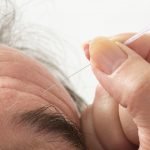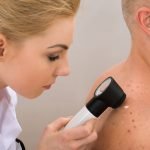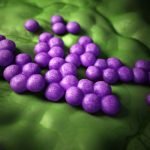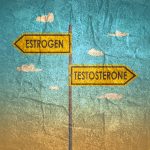Detoxification Support: A Primary Need in Preconception and Fertility Wellness
SHANNON SINSHEIMER, ND
With greater awareness of the potential problems that can occur during conception, more couples are seeking preconception care to address potential infertility issues. Studies have noted lowered sperm count and quality in men,1-3 while infertility rates in women have been climbing.1 These trends, along with an increased desire by couples to enhance whole-body wellness prior to conception, point to a need for practitioners to consider the impact of environmental toxins on fertility and offer patients a structured, multi-week detoxification program to support conception.
EDCs
Endocrine-disrupting chemicals (EDCs) have gained widespread attention across multiple medical disciplines. EDCs include industrial and environmental chemicals such as bisphenol A (BPA), phthalates, organochlorides, organophosphates, carbamates, pyrethroids, herbicides, fungicides, and fumigants. These chemicals are known to cause health issues related to the male and female reproductive system, pregnancy, fetal development, and early childhood development.1–3 Beyond EDCs, other factors that may pose dangers to fertility include heavy metal contaminants, potential effects of cellular or Wi-Fi exposure, and hobby- and/or occupation-based hazards. Exposure to these pollutants can vary, but EDCs can be considered ubiquitous in modern society.
EDCs can directly impact fertility outcomes. As an example, animal studies involving vinclozolin, a pesticide used on wine-producing grapes, showed decreased sperm counts, reduced sperm motion parameters, decreased litter sizes, and increased post-implantation loss.2–4 The same correlation was made between a spike in human male infertility and male genital dysfunction at birth in a particular wine-producing area that relied heavily on the same agent for agriculture. Another study found that BPA exposures, as measured in urine, were linked to implantation failure in women.5 Yet another study that reviewed data from mouse-models found that EDCs primarily seem to affect implantation and pregnancy rates, particularly after BPA and phthalate exposure.6 Finally, a wide-ranging epidemiological study revealed many negative effects of EDCs on aspects of female reproduction, including hormone levels, oocyte and embryo quality, and pregnancy and live birth rates.7 Agriculture, industrial, and home-use chemicals disrupt different processes in the reproductive cycle. Exposure to these chemicals, either in large, singular doses or in smaller, more frequent doses, can disrupt reproductive organ development, fertility, and success of conception.7
Testing
Exploring causative factors for infertility is wise and necessary both when patients present with infertility and when patients request advice for preconception health. There are multiple routes that link the etiology of fertility status changes to environmental toxicant intrusions and total body toxin “overload.” A pinpoint approach using deductive labs to assess specific aspects of the environmental burden (current and historical) can help the practitioner tailor a detox regimen. In addition, testing for nutritional status can help practitioners create a targeted nutrient program to support both detoxification and conception.
However, there are certain disadvantages to such lab-work-focused approaches in treatment design. They may be expensive and time-consuming. Moreover, due to the widespread use and pervasive nature of EDCs, one can assume that any adult patient of reproductive age has experienced exposure that could lower the quality of their health and/or fertility status.
Program Considerations
When the priority is to improve fertility or engage in preconception planning, a primary and early intervention approach is to assume multiple chemical burdens exist for both parties and to proceed with a supervised, comprehensive detoxification program. During this time, other avenues of treatment and testing may be explored while determining a primary etiology of reproductive health issues. Some patients will have engaged in prior detoxification programs, so it is wise to explore how appropriate and in-depth such programs were previously.
Optimizing Health
Many nutraceutical manufacturers provide a variety of pre-formed, comprehensive detoxification products. An ideal program will target the elimination of common environmental chemicals, phase 1 and phase 2 liver detoxification (with binding agents), and thorough reduction of body toxicants using antioxidants. Analyzing such detox protocols will help doctors choose an appropriate program, keeping in mind their practice area, demographics, and specific training.
Additionally, a complete detox program should incorporate counseling on how to remove reburdening agents. These may include pesticides, fungicides, other EDCs (body care, fragrances), and toxicants hidden elsewhere in the home (cleaning agents, bedding/pillows, packaging, etc). To further reduce burden, improving home air quality with high-quality air filters is also recommended. Finally, a detox program can most effectively eliminate and reduce environmental toxins when paired with the appropriate amount of time devoted to education and counseling. With detailed advice on removing potential toxic agents from the home, workspace, and personal use products, patients will be more likely to make the changes necessary to reduce their toxic burden moving forward.
Waiting
Before a couple engages in a detoxification program, it is appropriate to discuss using alternative birth control methods for the following 3 months. Sperm maturation takes roughly 64-74 days,8 while oocyte development and maturation, including the antral phase, takes approximately 90 days.9 Because of this time frame, a couple seeking improved sperm and egg quality would benefit from preventing conception for a minimum of 3 months after a detox program commences. Sometimes conception occurs quickly as EDCs are eliminated from the body. Detoxification may quickly improve hormonal balance, bringing with it the possibility of improved fertility status and improved reproductive organ circulation. In general, only after 3 months of detoxification will a couple reap the full benefits of enhanced quality sperm and oocyte maturation. Counsel patients to either momentarily pause intercourse during the female fertility window or use a barrier method until they can again begin actively working toward conception. After that, it is recommended to continue a low-toxicant lifestyle to improve the overall outcome of pregnancy, fetal health, and future fertility.
Summary
As initial treatments for male and female infertility and preconception wellness, detoxification programs thoroughly encompass the main tenets of naturopathic philosophy. They serve total patient wellness by eliminating obstacles to health, treating the whole body, providing counsel to eliminate the cause of disease, preventing future disease, and using the healing power of nature. While a detoxification program may only be the beginning of a longer health journey for a couple experiencing infertility, it is a starting place that can provide the opportunity improved lifelong health for themselves and their future children.
References
- Marill MC. Everyday chemicals are linked to declines in human fertility. MDedge Endocrinology. April 9, 2021. Available at: https://www.mdedge.com/endocrinology/article/238443/reproductive-endocrinology/everyday-chemicals-are-linked-declines-human. Accessed December 10, 2021.
- Levine H, Jørgensen N, Martino-Andrade A, et al. Temporal trends in sperm count: a systematic review and meta-regression analysis. Hum Reprod Update. 2017;23(6):646-659.
- Frazier LM. Reproductive disorders associated with pesticide exposure. J Agromedicine. 2007;12(1):27-37.
- Eustache F, Mondon F, Canivenc-Lavier MC, et al. Chronic dietary exposure to a low-dose mixture of genistein and vinclozolin modifies the reproductive axis, testis transcriptome, and fertility. Environ Health Perspect. 2009;117(8):1272-1279.
- Ehrlich S, Williams PL, Missmer SA, et al. Urinary bisphenol A concentrations and implantation failure among women undergoing in vitro fertilization. Environ Health Perspect. 2012;120(7):978-983.
- Caserta D, Costanzi F, De Marco MP, et al. Effects of Endocrine-Disrupting Chemicals on Endometrial Receptivity and Embryo Implantation: A Systematic Review of 34 Mouse Model Studies. Int J Environ Res Public Health. 2021;18(13):6840.
- Karwacka A, Zamkowska D, Radwan M, et al. Exposure to modern, widespread environmental endocrine disrupting chemicals and their effect on the reproductive potential of women: an overview of current epidemiological evidence. Hum Fertil (Camb). 2019;22(1):2-25.
- Babakhanzadeh E, Nazari M, Ghasemifar S, Khodadadian A. Some of the Factors Involved in Male Infertility: A Prospective Review. Int J Gen Med. 2020;13:29-41.
- Erickson GF. Follicle Growth and Development. The Global Library of Women’s Medicine: GLOWM. 2008. Available at: https://www.glowm.com/section-view/heading/Follicle%20Growth%20and%20Development/item/288#. Accessed January 31, 2022.

Shannon Sinsheimer, ND, is a naturopathic doctor and conception health specialist with a high success rate in fertility support. Dr Sinsheimer is the founder and medical director of Optimal Health Center in Palm Desert, CA. She has lectured extensively to the public and the medical community on the benefits and necessity of preconception health programs and is a passionate advocate for family, child, baby, and pregnancy wellness. Dr Sinsheimer’s preconception health program has successfully improved healthy baby outcomes and improved fertility success over the past 15 years. She enjoys traveling with her family on adventures around the world.










